Are you curious whether the advanced technology powering Turnitin can identify text crafted by sophisticated bots like ChatGPT? You’re certainly not alone in this quest. My explorations have led me to find that Turnitin’s artificial intelligence (AI) detection feature claims a staggering 98% accuracy rate.
This blog post is akin to a detailed guide, demystifying how Turnitin works and unpacking its implications for both students and educators. So, stay tuned—there’s more to be revealed as we delve into the enigma of AI within the realm of academic integrity.
Does Chat GPT Show Up on Turnitin? [Key Takeaways]
- Turnitin’s AI detection feature claims an accuracy rate of 98% in identifying text crafted by tools and AI chatbots like ChatGPT.
- However, Turnitin may have some limitations in accurately detecting text generated by AI like ChatGPT, leading to potential blind spots in plagiarism detection.
- Educators can assess student work for AI-generated content by analyzing writing style inconsistencies, content relevance, and coherence.
- Future developments in AI detection technology are crucial to effectively distinguish between human-generated and AI-generated text while minimizing false positives and negatives.
Understanding Turnitin and ChatGPT
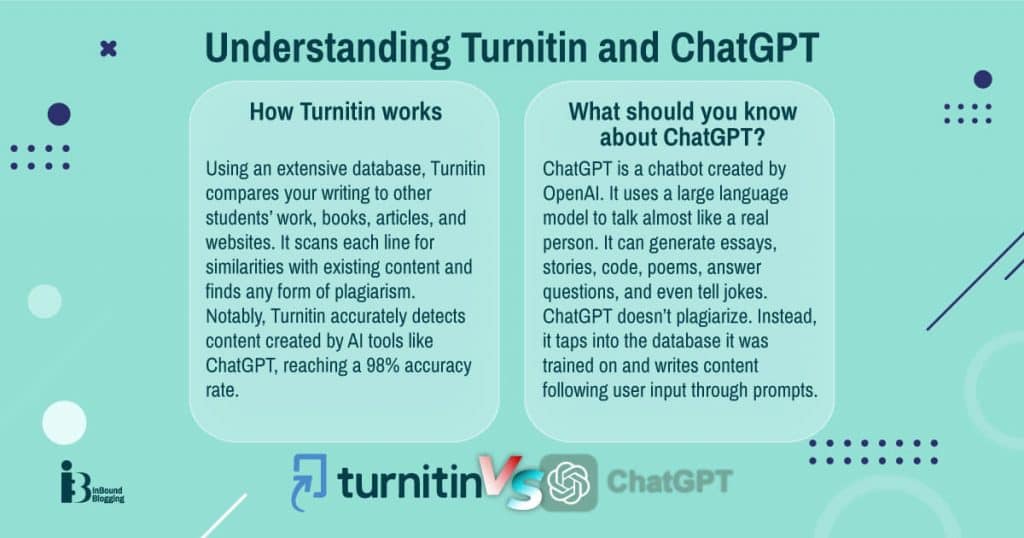
Turnitin uses machine learning algorithms to compare submitted texts with a vast database of academic content, while ChatGPT is an AI language model developed by OpenAI that can generate human-like text based on prompts given to it.
How Turnitin works
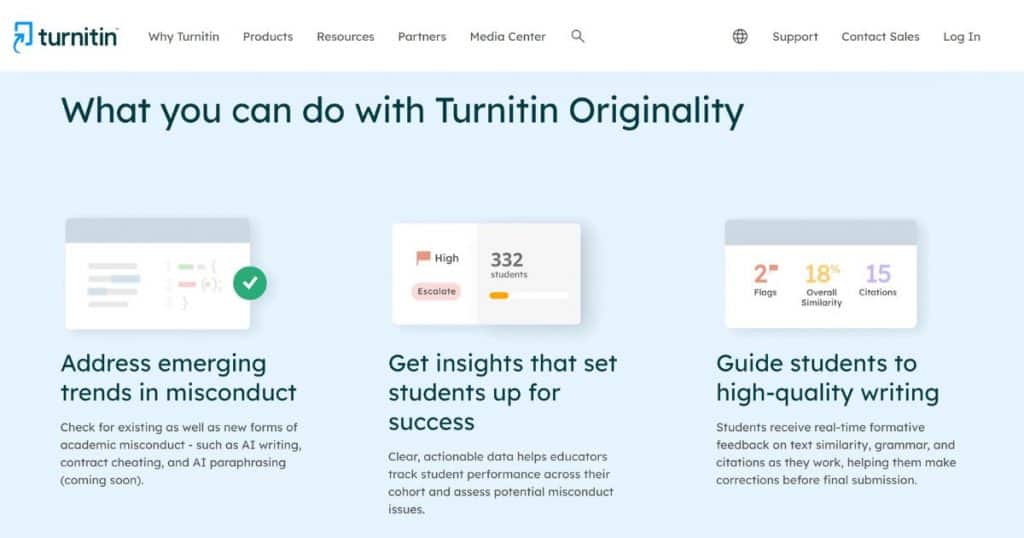
I delved into how Turnitin assesses paper originality, and it’s impressive. Using an extensive database, it compares your writing to other students’ work, books, articles, and websites. When you submit your paper, Turnitin scans each line for similarities with existing content and finds any form of plagiarism.
The resulting report highlights copied sections and identifies potential citation issues. It provides a similarity score, revealing how much of your submitted work is unoriginal. Notably, Turnitin accurately detects content created by AI tools like ChatGPT, reaching a 98% accuracy rate.
What should you know about ChatGPT?
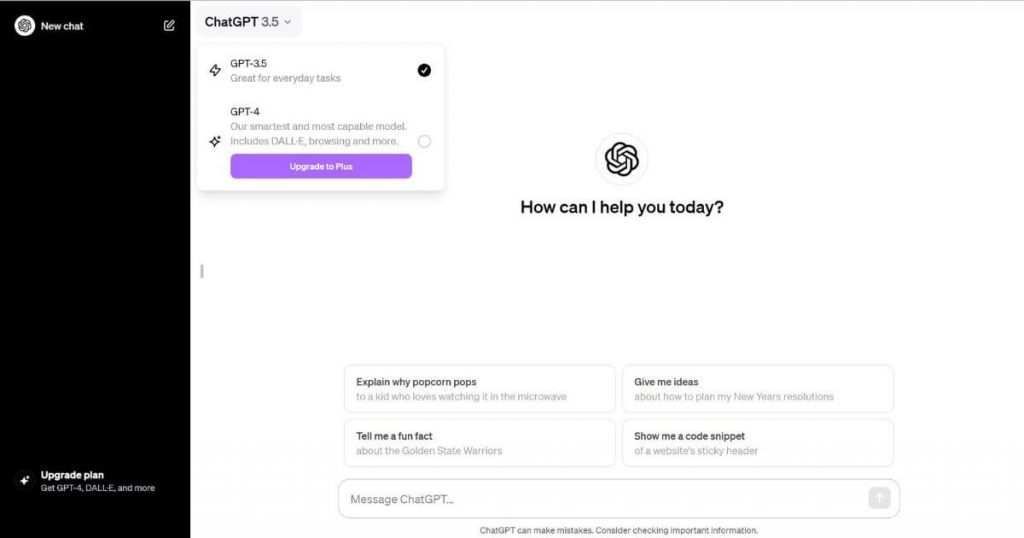
ChatGPT is a smart chatbot created by OpenAI. It uses a large language model to talk almost like a real person. This bot boasts the outstanding ability to generate essays, stories, code, poems, answer questions, and even tell jokes. ChatGPT doesn’t plagiarize. Instead, it taps into the vast database it was trained on and writes content following user input through AI prompts.
ChatGPT can also help its users rewrite and improve their content. Generally, it feels like you’re chatting with someone who knows a lot about many things.
Here’s my article on how to bypass ChatGPT detectors, in case you’re interested.
Can Turnitin Detect ChatGPT and Other AI Language Models?
Turnitin has developed technology to detect AI writing generated by tools like ChatGPT, specifically trained on academic writing. This feature provides an AI writing detection percentage, independent of similarity scores, which is included in the Similarity Report. The AI writing indicator is visible to instructors and administrators, showing the percentage of text likely generated by AI writing tools.
Well, Turnitin got better at spotting AI-written text. It can now catch content from ChatGPT almost all the time—with up to 98% accuracy! That includes words created by different versions of ChatGPT, such as GPT-3 and GPT-3.5 Turbo, as well as paraphrased AI content.
Can Turnitin detect Chat GPT-4 and other AI models? As for GPT-4: yes, this is a recent update of the Turnitin AI detector. When it comes to other AI models, Turnitin continues to evolve and may start detecting the use of language models like Gemini (formerly Bard), Claude, etc. in the near future.
How Does Turnitin Detect ChatGPT?
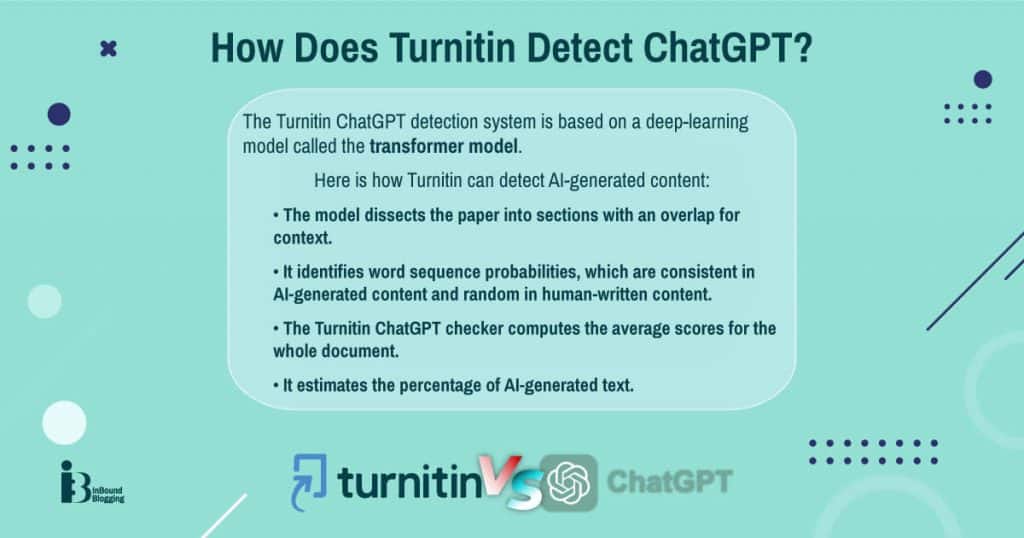
The Turnitin ChatGPT detection system is based on a deep-learning model called the transformer model. Here is how Turnitin can detect AI-generated content:
- The model dissects the paper into sections with an overlap for context.
- It identifies word sequence probabilities, which are consistent in AI-generated content and random in human-written content.
- The Turnitin ChatGPT checker computes the average scores for the whole document.
- It estimates the percentage of AI-generated text.
However, Turnitin’s AI detection tool has certain limitations when it comes to identifying text generated by AI like ChatGPT, making it important for instructors to be aware of potential blind spots in plagiarism detection.
Limitations of Turnitin’s AI Detection Capabilities
Sometimes, Turnitin faces difficulties in distinguishing AI-generated text, like ChatGPT, from human writing.
What is more, the software may falsely flag human-written text. Despite these challenges, maintaining academic integrity remains crucial, emphasizing the importance of generating original work and respecting writing standards.
“In my experience working with students and their college applications, Turnitin is a helpful tool, but it should not be solely relied upon as the ultimate judge of originality. I’ve tried it many times, and there were instances where it failed to include similarities between student essays and online sources.
However, I have also seen Turnitin catch blatant plagiarism cases that would have gone unnoticed without its use. So, while I have confidence in the overall effectiveness of Turnitin, I always encourage my students to carefully review their work and ensure that all sources are properly cited to avoid any potential issues.” — Eric Eng, Founder and CEO, Private College Admissions Consultant. Business Owner, AdmissionSight
Turnitin and ChatGPT: Ethical Implications in Education
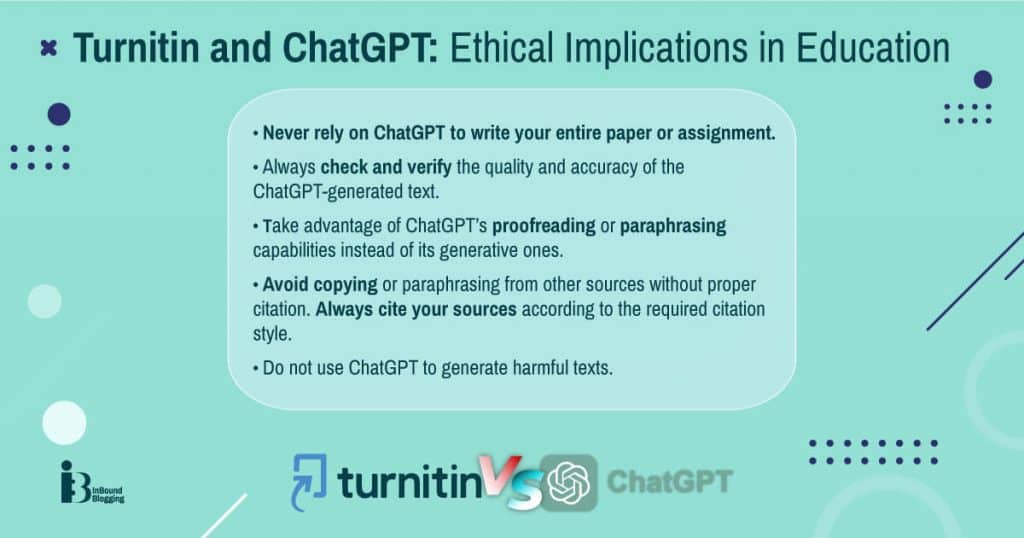
When diving into the combination of Turnitin and ChatGPT in the academic arena, instructors and students need to keep things savvy and ethical for a smooth experience.
Educators, including professors, can identify the use of ChatGPT by examining inconsistencies in writing style and assessing the relevance and coherence of the content.
Here are seven ways to identify writing style inconsistencies:
- Look for sudden shifts in tone, vocabulary, or sentence structure.
- Note abrupt changes in topic development or logical flow as potential AI-generated indicators.
- Compare the writing styles in the current assignment with previous written work to identify unusual deviations.
- Examine the depth of understanding for signs of original thought.
- Engage with students about their writing process, encouraging reflection on thought processes.
- Ask probing questions during discussions to gauge understanding.
- Use anti-plagiarism software like Turnitin to check for content similarities.
And here are our tips for students who embrace the latest AI technology. Don’t get me wrong, ChatGPT is good for students as long as they keep things fair.
- Never rely on ChatGPT to write your entire paper or assignment. You should use AI-generated content only as a starting point for your writing.
- Always check and verify the quality and accuracy of the ChatGPT-generated text. Evaluate its spelling and grammar, punctuation, sentence structure, reliability, and, of course, whether it makes sense or not. It’s worth noting that the use of Grammarly (or similar tools) to polish your writing won’t be perceived and flagged as AI-assisted content.
- Take advantage of ChatGPT’s proofreading or paraphrasing capabilities instead of its generative ones. After all, the whole purpose of writing an academic paper is to show off your own knowledge, not that of others.
- Avoid copying or paraphrasing from other sources without proper citation. Always cite your sources according to the required citation style.
- Do not use ChatGPT to generate harmful texts. Respect the rights and dignity of others, avoiding content that could cause physical, emotional, financial, or other type of harm.
“I firmly believe that the software shouldn’t be perceived as a tool solely aimed at accusing students of plagiarism. Instead, I view this new feature as a means to provide valuable information to teachers. It equips them with data for analyzing student writing and offering additional guidance and feedback. It should be seen as a tool to support students’ learning and academic development, rather than as a tool for accusing them of wrongdoing.” — Precious Abacan, CIO, Softlist.io
Final Thoughts
In conclusion, the accuracy of Turnitin’s AI detection capabilities in identifying content generated by ChatGPT is a topic of ongoing debate. The ethical implications and future developments in AI detection technology are important considerations for students and instructors.
Discover which AI checker tools teachers use to detect work produced by artificial intelligence.
FAQ
How can Turnitin detect Chat GPT?
Turnitin automatically highlights text that it suspects was written by OpenAI’s ChatGPT. Turnitin uses its own machine learning model to distinguish AI-generated text from human-written text, with a minimum word count requirement of at least 300 words for detection.
Can Turnitin detect Chat GPT if you paraphrase?
Yes, Turnitin can detect paraphrased AI content, whether it’s rephrased through the use of content spinners or online paraphrasing tools such as QuillBot.
Can teachers count on Turnitin to catch students using AI chatbots to write essays?
Teachers use tools like Turnitin to help find out if students are using AI chatbots for their homework, but they also need good teaching methods because the tool might not always catch everything.



